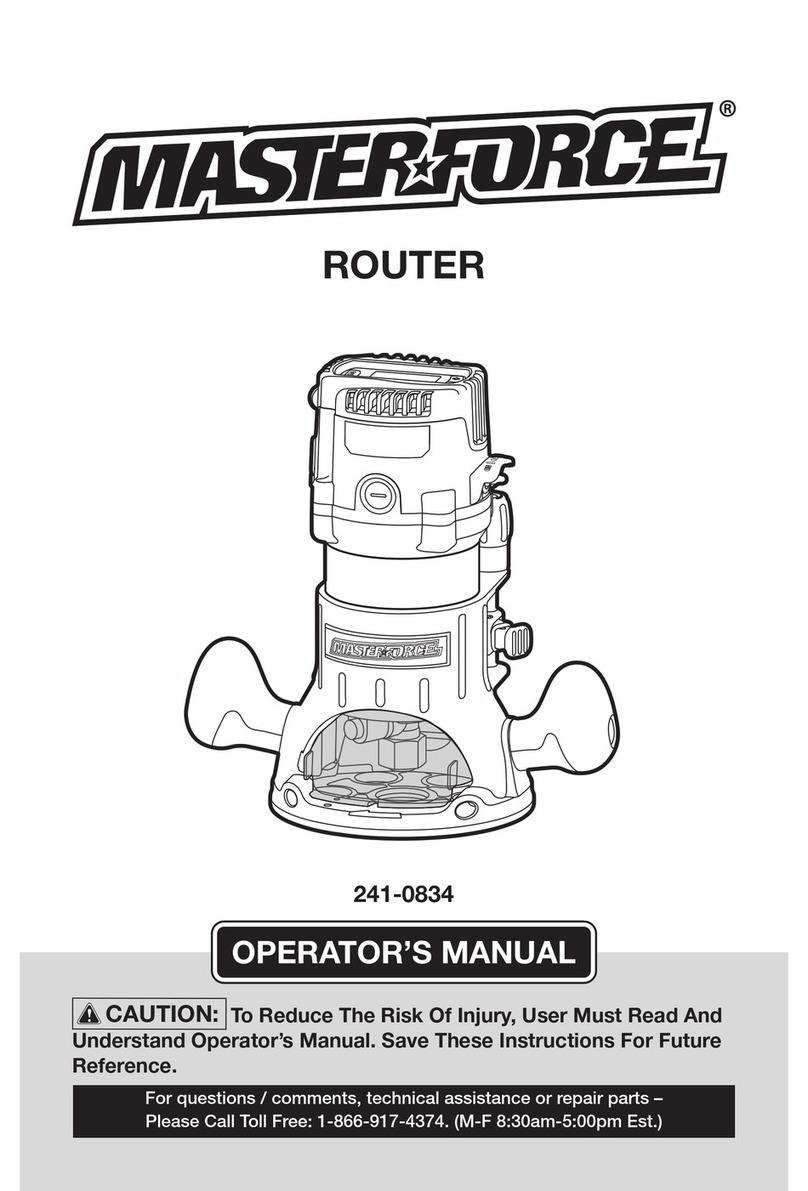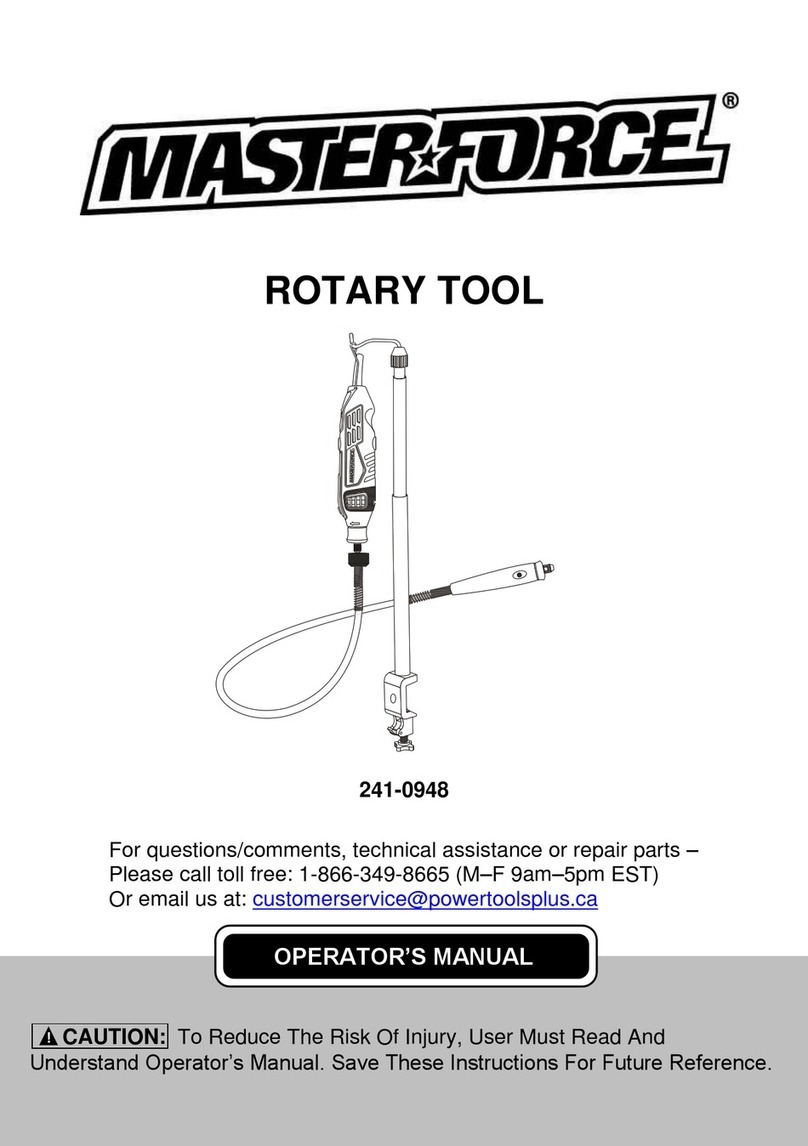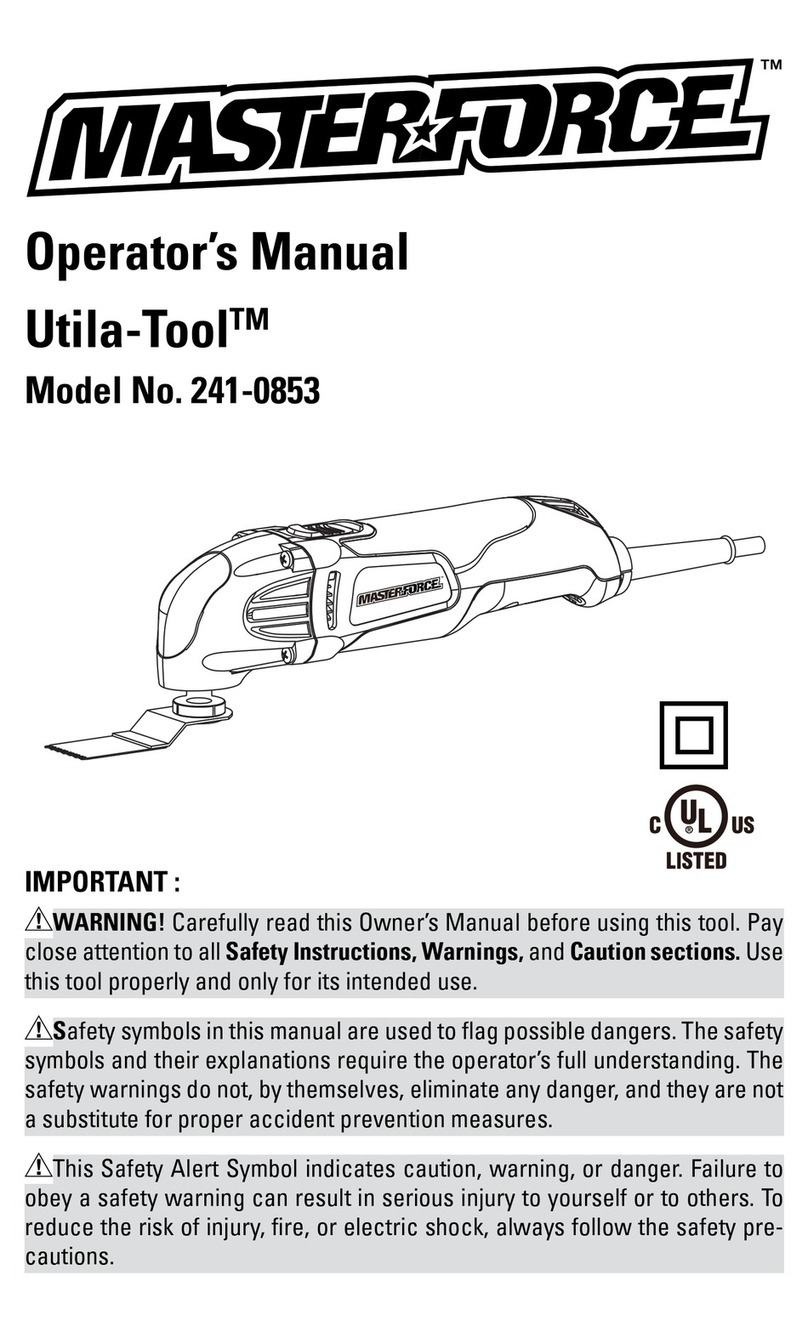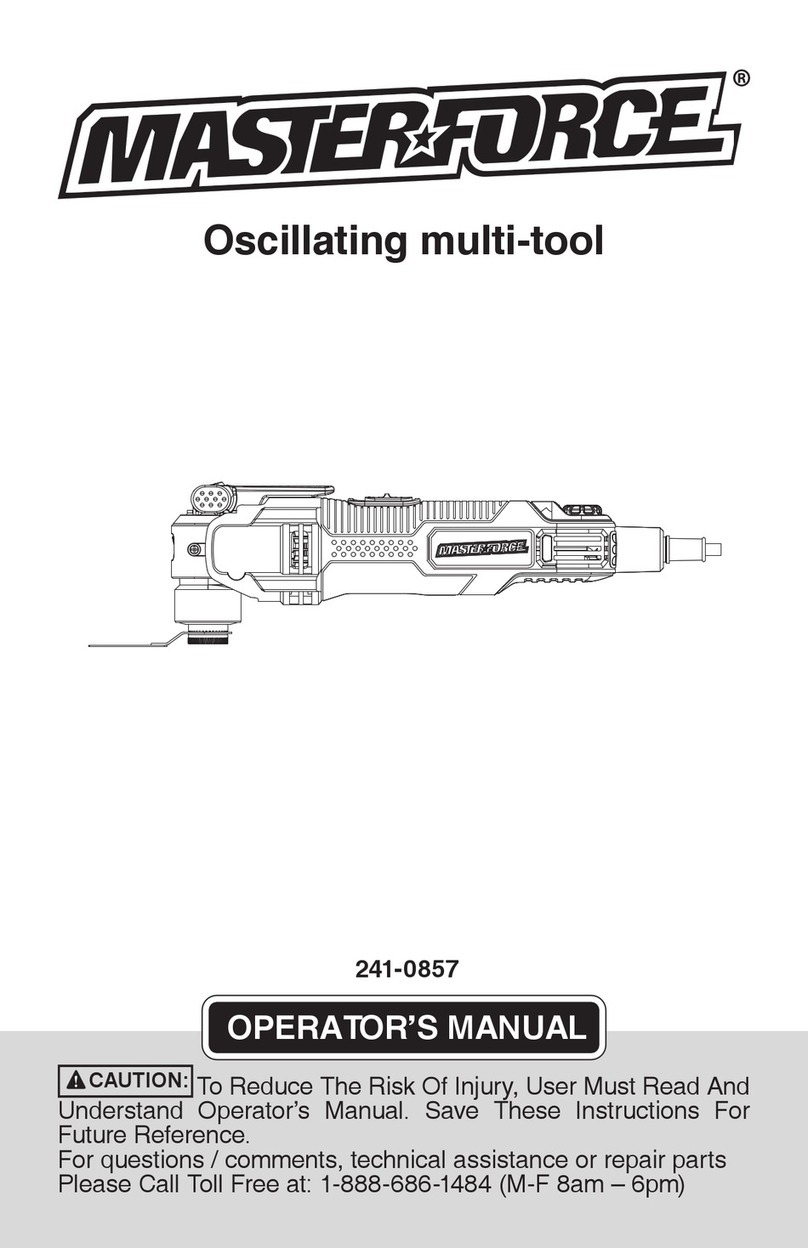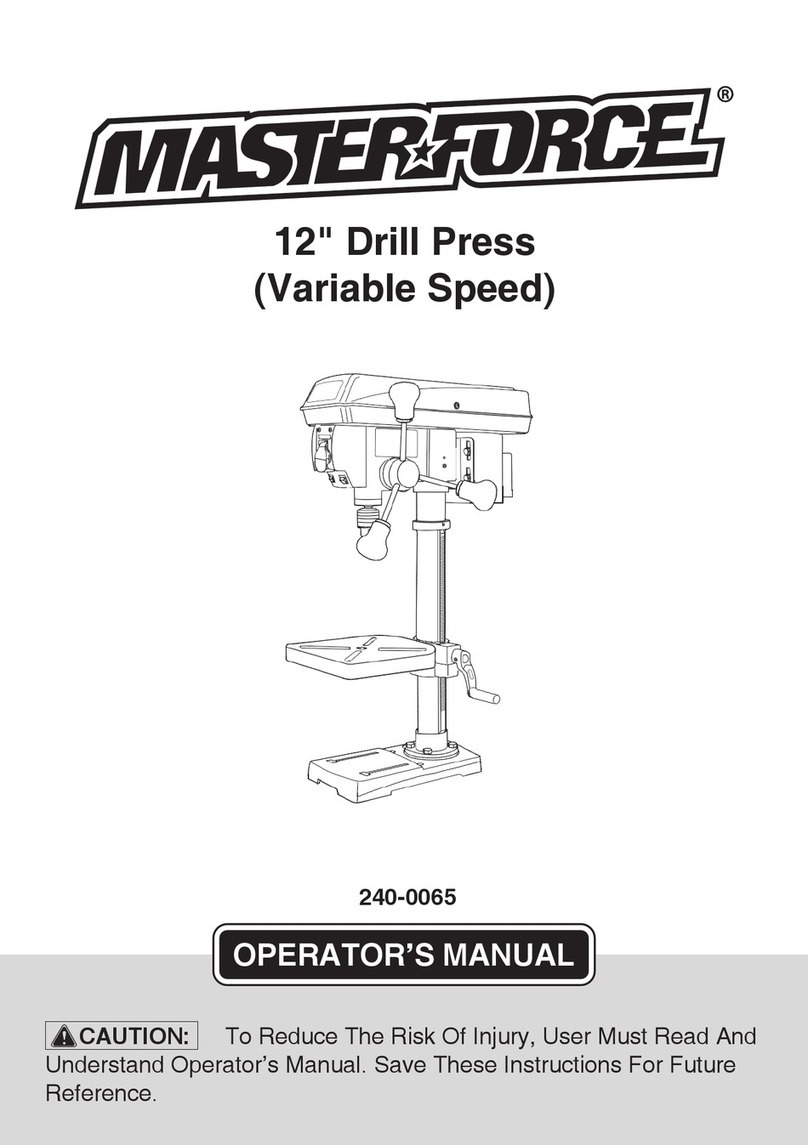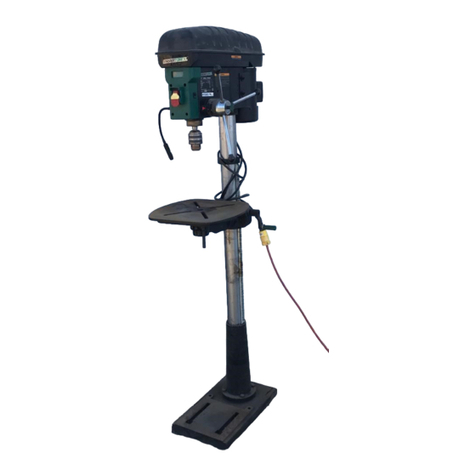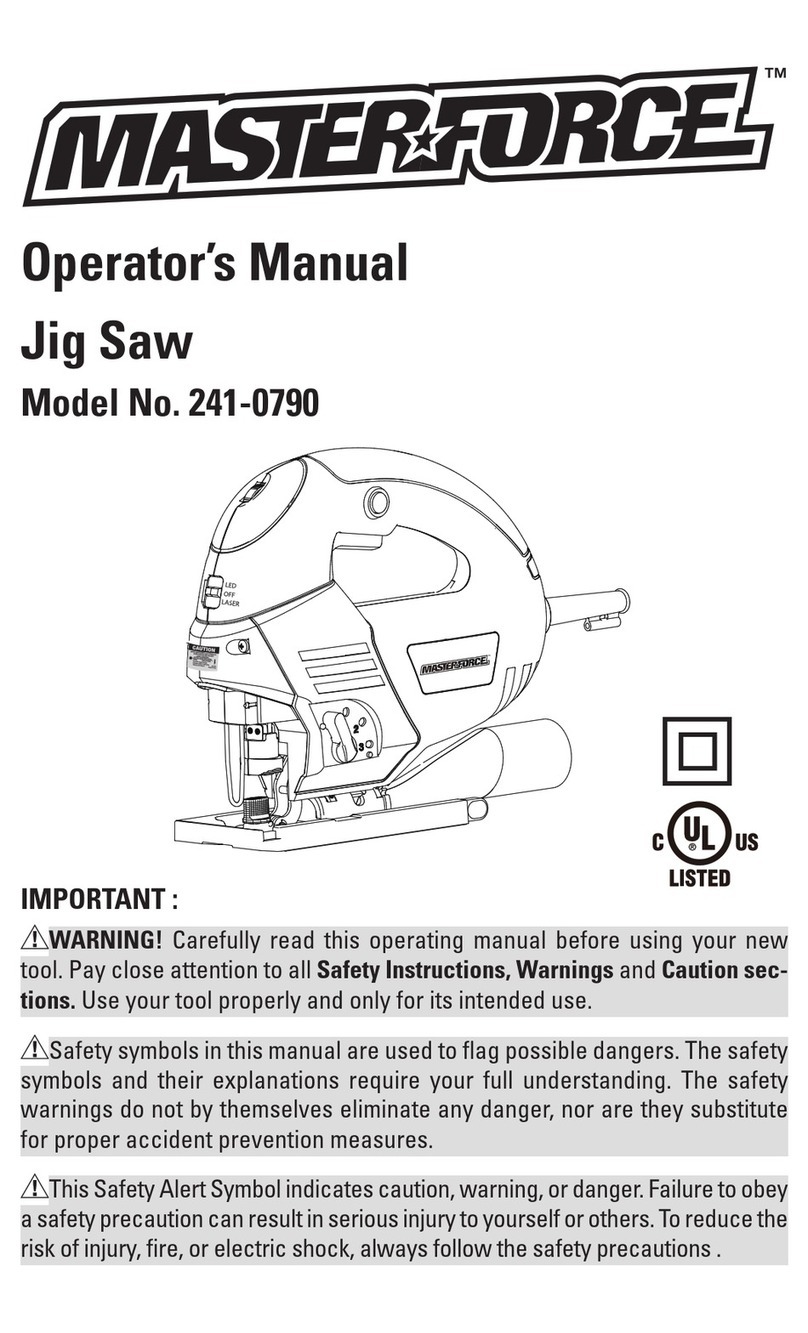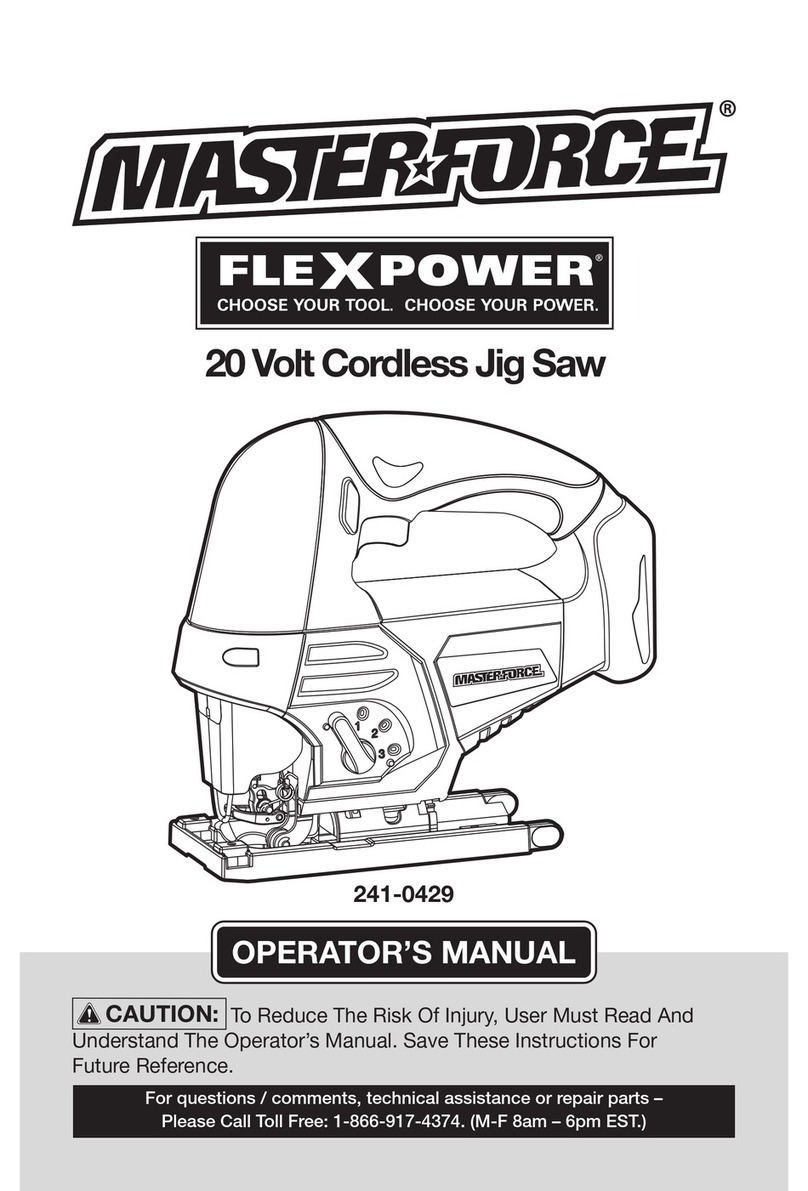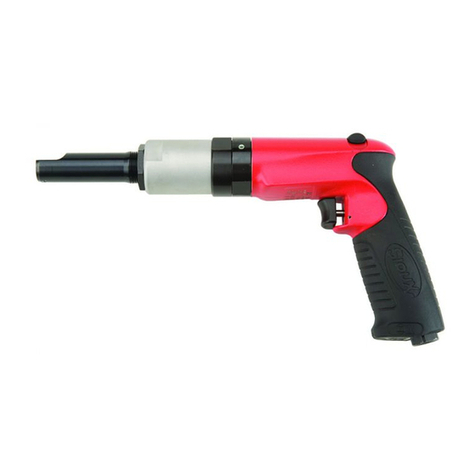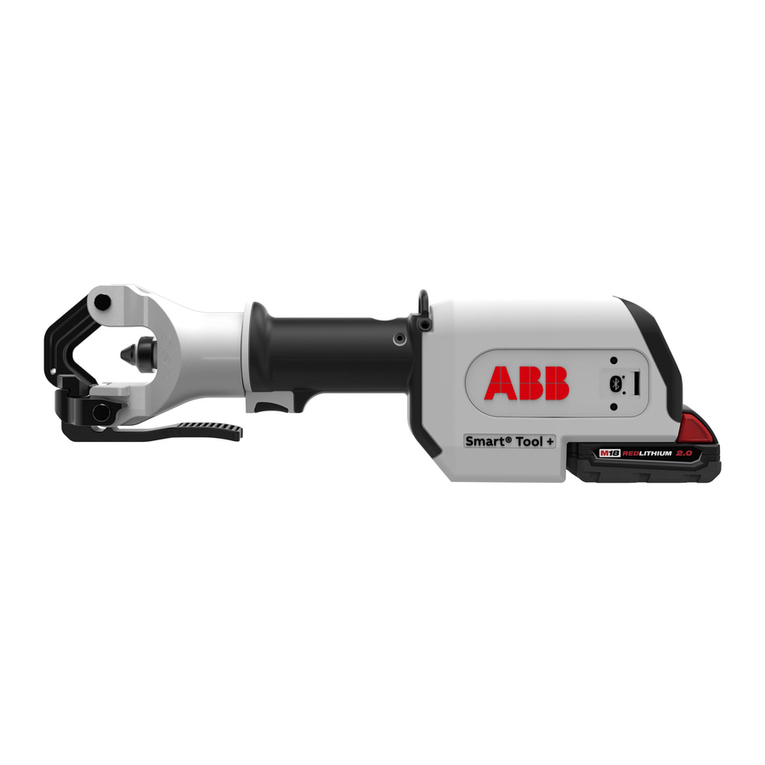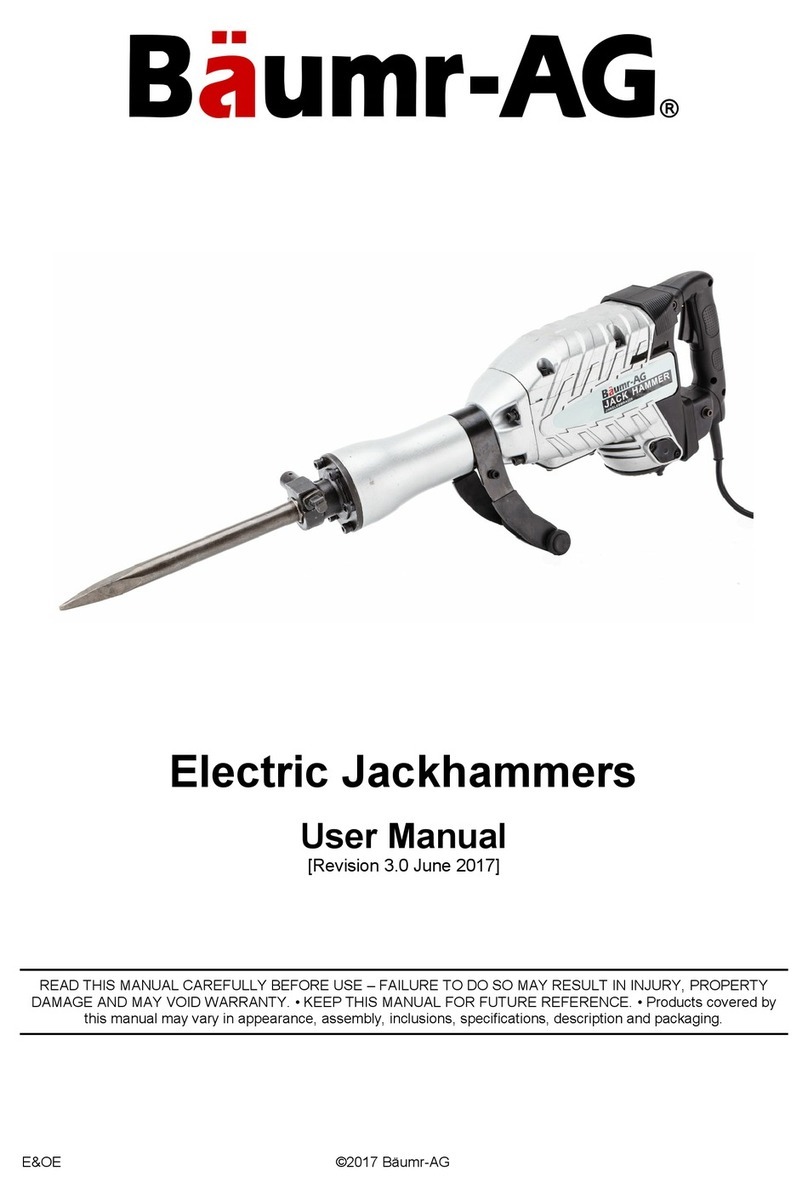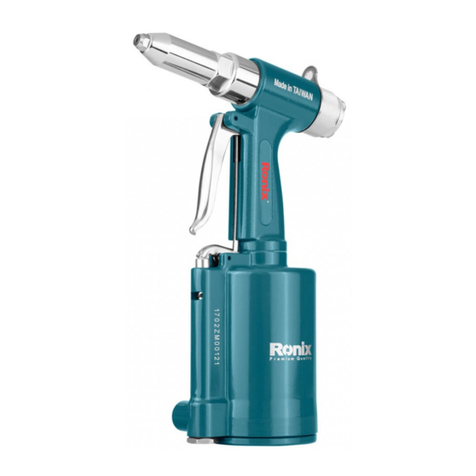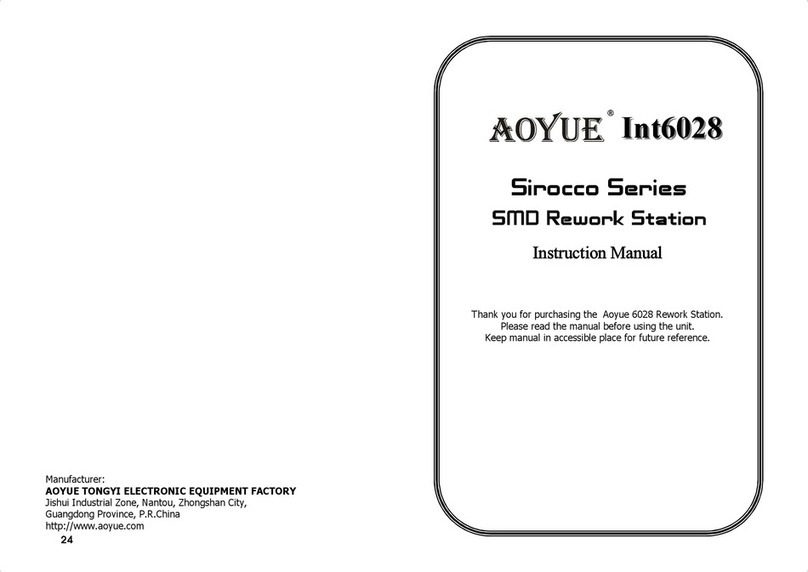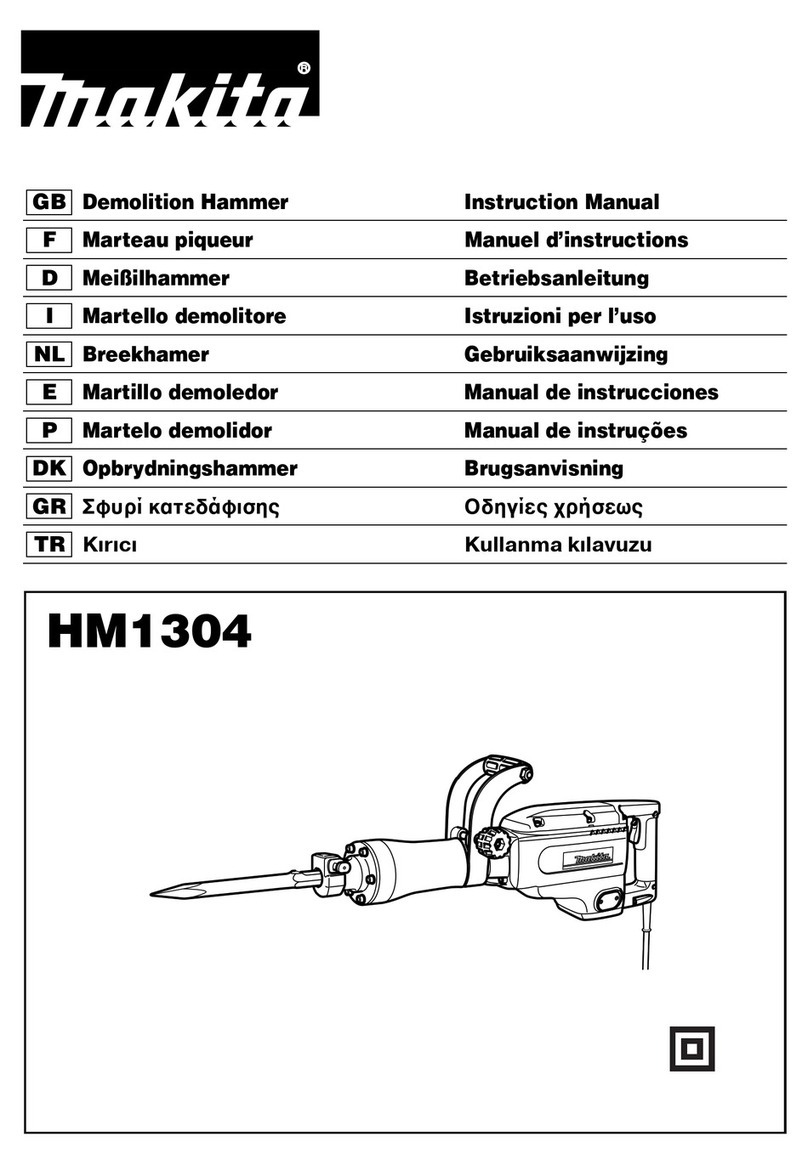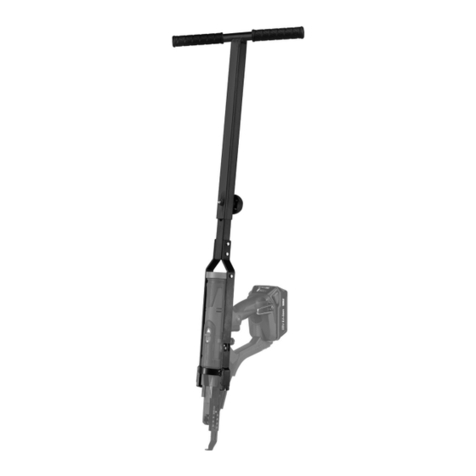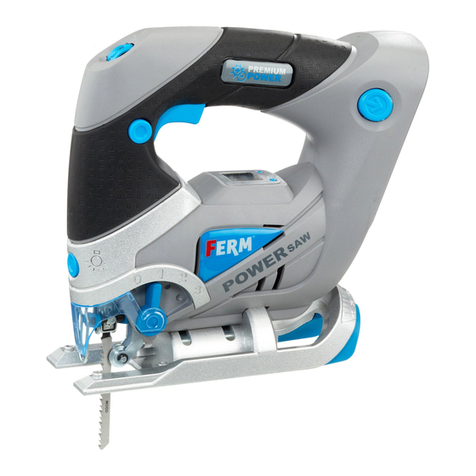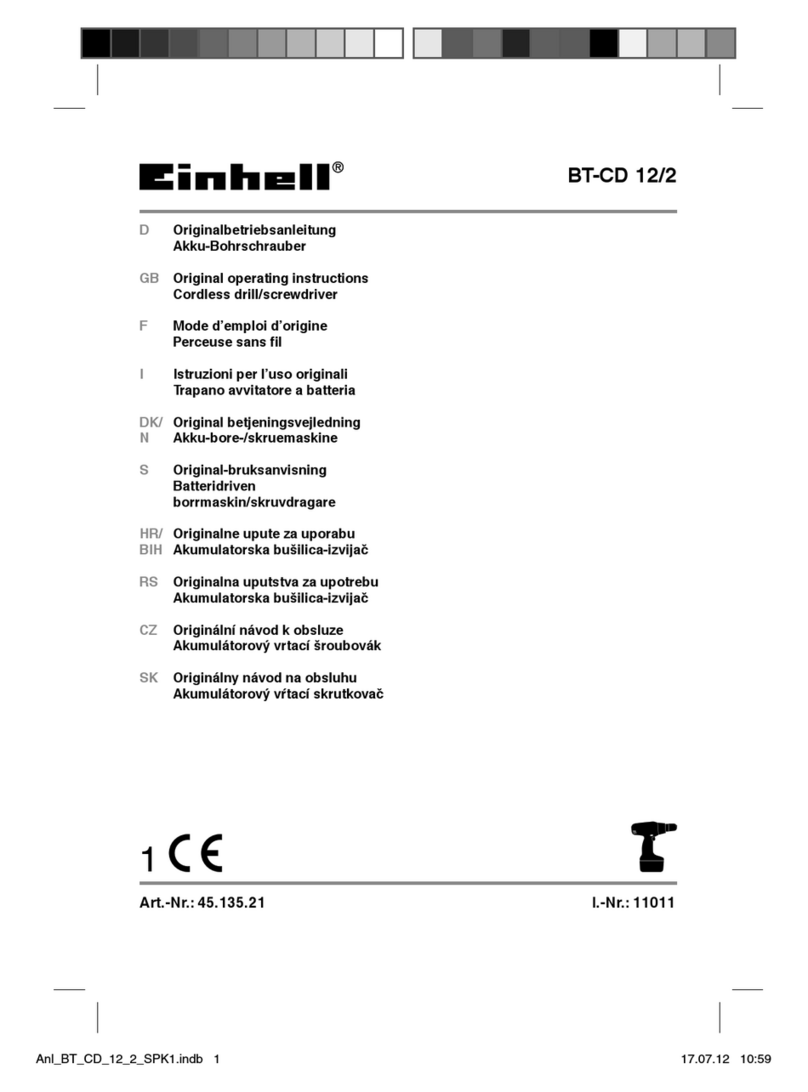Page 5
SAFETY INSTRUCTIONS
5. Do not overreach. Keep proper footing
and balance at all times. This enables
better control of the power tool in
unexpected situations.
6. Dress properly. Do not wear loose
clothing or jewelry. Keep your hair,
clothing and gloves away from moving
parts. Loose clothes, jewelry or long hair
can be caught in moving parts.
7. If devices are provided for the
connection of dust extraction and collection
facilities, ensure that these are connected
and properly used. Use of these devices
can reduce dust-related hazards.
USE AND CARE OF
THE POWER TOOLS
1. Do not force the power tool. Use the
correct power tool for your application.
The correct power tool will do the job
better and more safely at the rate for
which it was designed.
2. Do not use the power tool if the switch
does not turn it on and off. Any power tool
that cannot be controlled with the switch is
dangerous and must be repaired.
3. Disconnect the plug from the power
source and/or the battery pack from
the power tool before making any
adjustments, changing accessories, or
storing power tools. Such preventive
safety measures reduce the risk of starting
the power tool accidentally.
4. Store idle power tools out of the reach of
children and do not allow persons unfamiliar
with the power tool or these instructions
to operate the power tool. Power tools are
dangerous in the hands of untrained users.
5. Maintain power tools. Check for
misalignment or binding of moving parts,
breakage of parts and any other condition
that may affect the power tool’s operation.
If damaged, have the power tool repaired
before use. Many accidents are caused by
poorly maintained power tools.
6. Keep cutting tools sharp and clean.
Properly maintained cutting tools with sharp
cutting edges are less likely to bind and
are easier to control.
7. Use the power tool, accessories, tool
bits etc., in accordance with these
instructions, taking into account the
working conditions and the work to be
performed. Use of the power tool for
operations different from those intended
could result in a hazardous situation.
SERVICE
1. Have your power tool serviced by a
qualied repair person using only identical
replacement parts. This will ensure that the
safety of the power tool is maintained.
SPECIFIC SAFETY RULES FOR
UTILA-TOOL
1. Hold power tools by the insulated
gripping surfaces when performing an
operation where the cutting tool may
contact hidden wiring. Contact with a
“live” wire will make exposed metal parts of
the tool live and shock the operator.
2. Never use your Utila-tool to perform
sanding or separating operations in wet
conditions.
3. Always wear eye protection.
4. Always wear ear protection during
extended periods of operation.
5. Always wear a dust mask if the
operation is dusty.
6. Wear protective gloves when
changing application accessories.
Application accessories become hot after
prolonged usage.
7. Always inspect for and remove all
nails, screws, staples, etc., before sanding.
8. Always check walls and ceilings to
avoid hidden power cables and pipes. A
metal detector (available separately) is very
helpful for this purpose.

